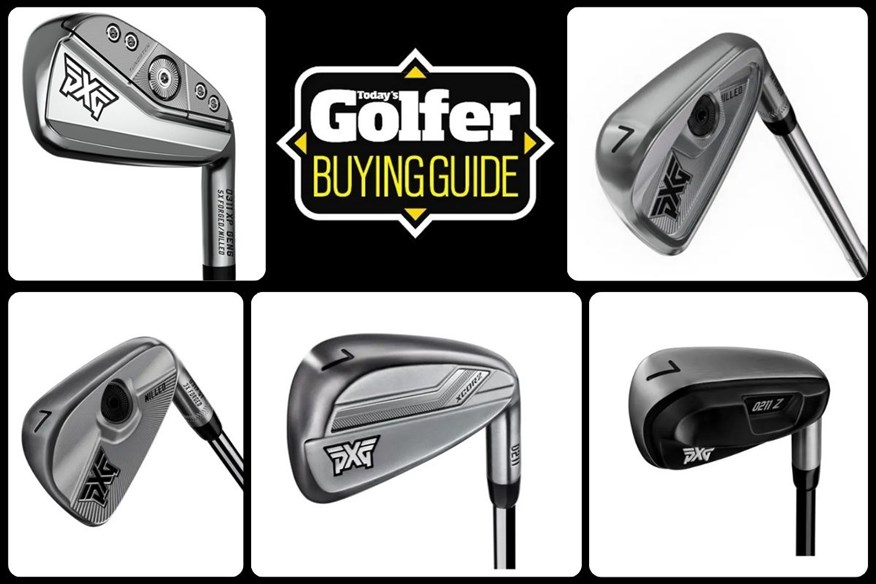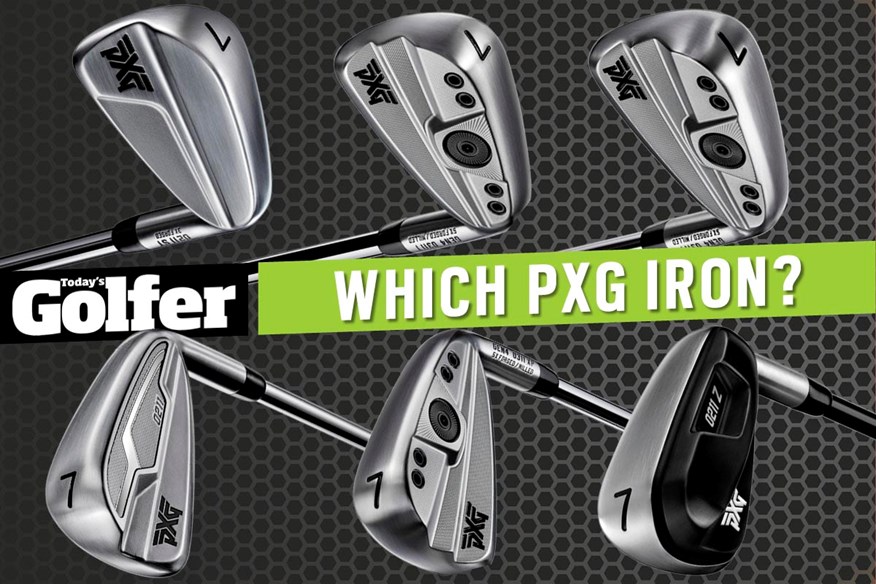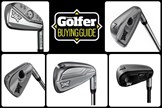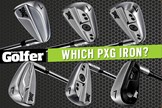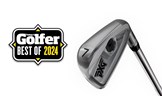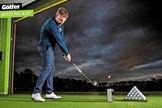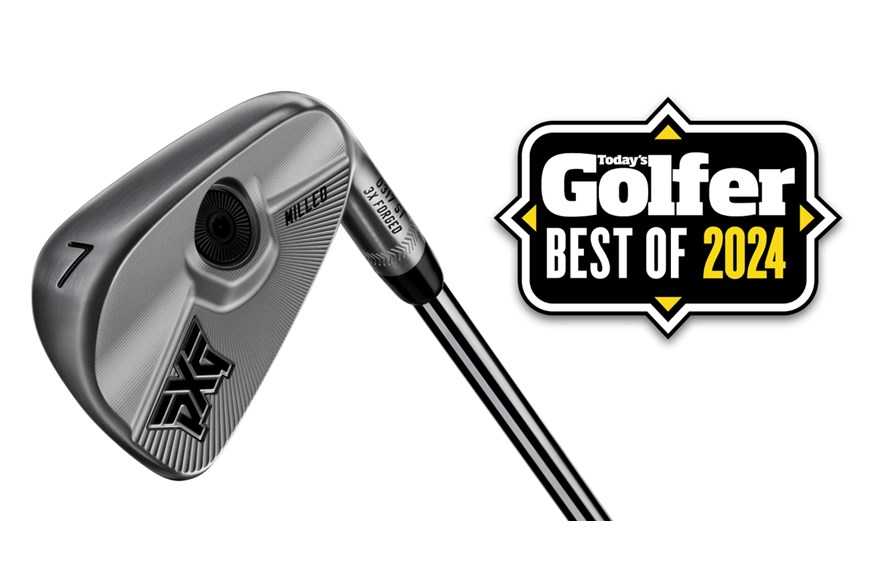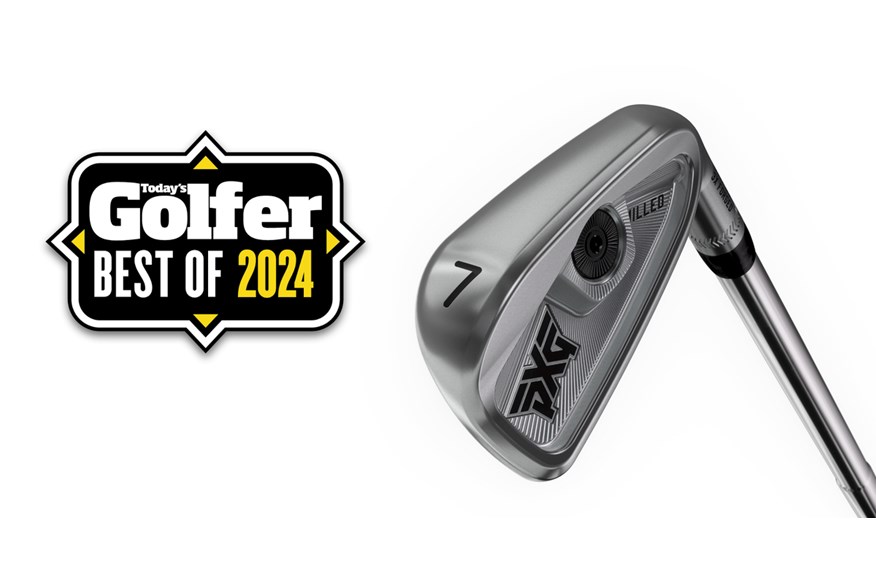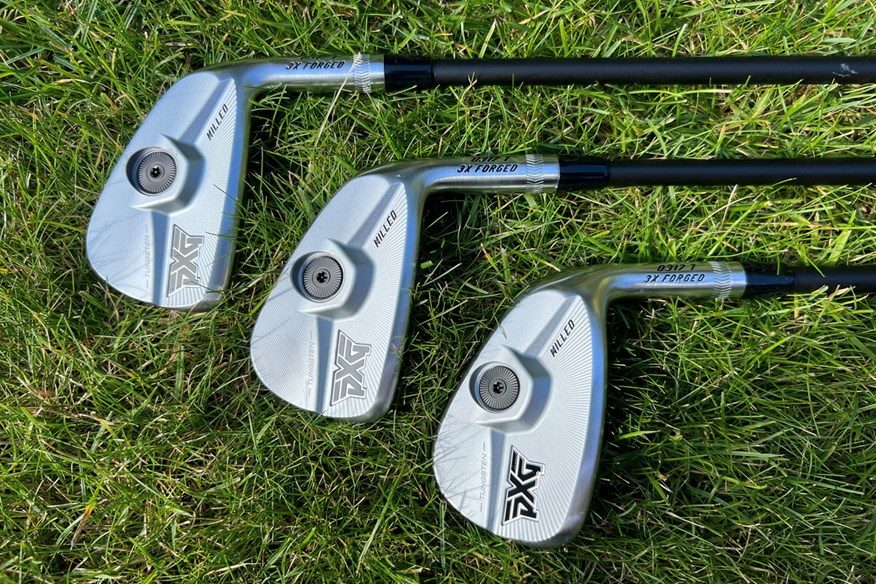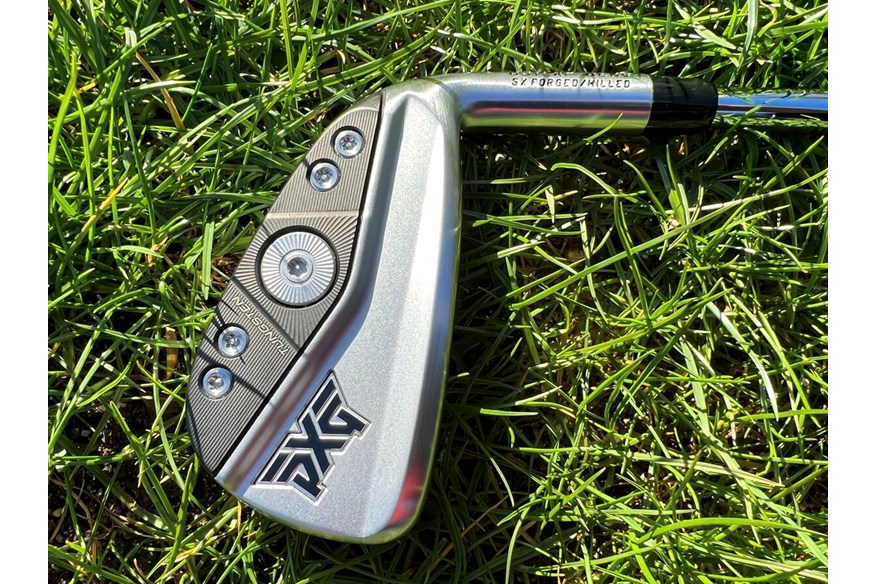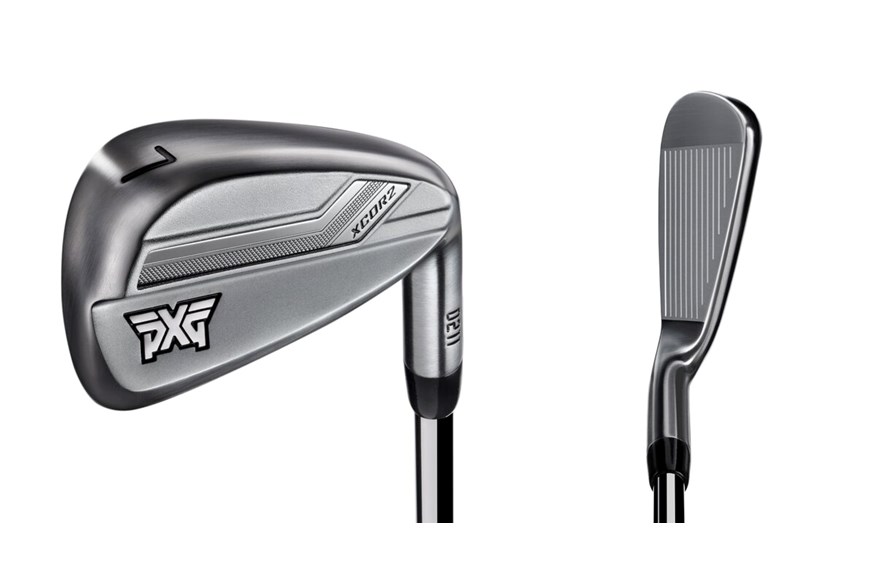The best PXG irons: Tested on a launch monitor and reviewed by golf experts
Last updated:
What are the best PXG irons for your golf game? Here’s your complete guide to each iron in PXG’s 2025 line-up, who they are aimed at, and how they performed when tested by our test pro.
Most major golf brands have five, six, or even seven sets of irons in their line-ups. Some are new models, others carried over from previous ranges, but all ARE aimed at very specific golfers. Here is a breakdown of the best PXG irons available in 2025.
There’s been a huge influx of new forged iron models over recent years, and PXG makes some of the best irons available. Choices range from sublime musclebacks to hollow heads, cavity backs, and super forgiving hybrid-style irons. While some are forged from soft carbon steel, others have springy fast faces, just like a driver.
With so many options out there, it’s easy for golfers to get confused over which will best suit their game. And even those who have a good idea of which iron will suit them often don’t realize what’s put on the line in terms of ball speed, carry distance, and forgiveness by choosing a set above their ball striking capability.
With every major 2025 iron model now available in the shops, we wanted to show how each brand’s iron range compares when they go head to head. If it’s a PXG model that has caught your eye, we’ll walk you through their range and show how each performs.
Thanks to our consistent test pro and his launch monitor data, we can show how whole families of irons compare. Read about how we test here. We’ve also given each model a forgiveness rating and a handicap guide to spell out simply which players should be considering each model, and, more importantly, why. Find out more about the ratings here.
If you want to see how all of this year’s irons performed then check out our full 2024 irons test or, if there are other brands on your shopping list, take a look at which, Callaway, Ping, TaylorMade, Mizuno, and Srixon irons are right for you.
Best PXG irons at a glance
Best PXG muscleback blade iron
Like all blades, the 0317 STs are for a very limited audience of elite ball strikers and shot shapers.
Unlike other blades though in true PXG fashion, the STs can be dialed up or down in weight and can accommodate longer or shorter shafts without moving the center of gravity. Which to elite-level golfers will be a really big deal in terms of feel and additional performance.
I’m a big fan of how PXG has created the 0317 family as a standalone elite sharp-shooter franchise as they believe very good golfers can benefit from slightly different club traits to regular club golfers, it’s a very classy move. With three lovely 0317 models to choose between golfers have the opportunity to combo this muscleback blade with the cavity back 0317 CB and hollow body 0317 T.
As beautifully crafted and alluring as this model is in reality this will be PXG’s smallest-selling iron, and it’s rarely the iron of choice for PXG tour staff. If you find yourself drawn to them I’d seriously urge taking a reality pill and checking out the 0317 CB which offers 14% more MOI, or the 0317 T which boasts an additional 11% MOI over the CB.
Read our full PXG 0317 ST iron review.
TG Test Pro Data:
Ball Speed: 118.9 MPH / Launch Angle: 15.4º / Backspin: 5619 RPM / Peak Height: 27 YDS / Descent Angle: 42º / Carry Distance: 174 YDS / Shot Area: 184.5 SQ YDS
Pros
- A beautifully shaped profile
- Go longer, shorter, heavier, or lighter without moving the center of gravity
- Ultimate workability
Cons
- Very unforgiving
| Category | Muscleback blade |
| Handicap range | 4 and below |
| Construction | Forged and milled 8620 carbon steel |
| 7-iron loft | 33º |
Best PXG tour iron
It’s taken a bit of time but through working with their ‘elite’ athletes PXG has come to understand that a good portion of very good players just want a really good forged cavity back iron to play out on tour. Until recently the brand has almost exclusively championed the benefits of modern fast-face hollow body technology so having learned their lesson the muscleback 0317 ST and cavity back 0317 CB completely fly in the face of the brand's original concept.
Our Best 2025 Players’ Iron test highlighted the PXG 0317 T and CB as the first and second longest irons in the players' iron category. A really impressive result but speed and distance should be much less of a factor when buying within this category.
If you’re attracted to the T or CB you’ll want to know the slightly stronger lofted, hollow body 0317 T was 2.2mph faster for ball speed and produced three more yards of 7-iron carry distance, but our test pro felt the CB would a better choice for low single-digit handicappers looking for maximum control and shot to shot consistency.
The one-piece forged CB excelled for accuracy too, shots launched and flew higher, with a steeper decent angle so hitting shots into a green will be much like throwing darts at a board. Just don’t get confused and think this is a forgiving forged cavity back it isn’t but within the players’ iron market it’s a seriously strong choice.
If your handicap is deep into single figures I believe this is one of the top five performing players’ irons in 2025.
TG Test Pro Data:
Ball Speed: 122.8 MPH / Launch Angle: 16.6º / Backspin: 5568 RPM / Peak Height: 32 YDS / Descent Angle: 45.7º / Carry Distance: 179 YDS / Shot Area: 142.1 SQ YDS
Pros
- Brilliant feel and feedback
- A shape and profile to rival the best players' irons of 2024
- Go longer, shorter, heavier, or lighter without changing the center of gravity location
Cons
- Genuinely difficult to fault in the players' iron arena
| Category | Cavity Back Players' Iron |
| Handicap range | Six and below |
| Construction | Forged and milled from 8620 carbon steel |
| 7-iron loft | 33º |
Best PXG hollow body players' iron
You have to take your hat off to PXG as their iron line-up is so strong with seriously good choices to be made across the board. To have the option of a hollow body or cavity back within the players’ iron category isn’t entirely unusual (TaylorMade does it with the P7MC and P770) but how they fill this head with a different material to what’s inside the 0311 GEN 6 irons is a whole different level to the competition.
Only through research have the company learned that different materials inside the head alter ball flight, feel, and spin. So, to better cater to the wants of the elite players the T is aimed at, the SCOR material inside delivers lower launch, and higher spin, with less emphasis on maxing out ball speed. It’s also a really good step towards ironing out the inconsistencies some very good players feel hollow bodies introduce to iron play.
Like the TaylorMade P770 the 0317 T stuffs as much tech into a players' iron profile as is physically possible. Just remember as beautifully proportioned as they are the slightly stronger lofted 0311 P GEN6 players’ distance iron offers an additional 14% of MOI.
On the golf course that will help protect ball speed and distance so off-center hits still make the green, or carry a bunker/lake, which at club level is super important in reducing your handicap.
Read our full PXG 0317 T iron review.
TG Test Pro Data:
Ball Speed: 125 MPH / Launch Angle: 15.6º / Backspin: 5343 RPM / Peak Height: 32 YDS / Descent Angle: 45.1º / Carry Distance: 182 YDS / Shot Area: 118.2 SQ YDS
Pros
- Fantastic feel and sound
- A good choice of stock shaft options
- Go longer, shorter, heavier, or lighter without moving the center of gravity
Cons
- You will need to like the idea of thin, fast, face tech in the players' iron arena
| Category | Hollow Body Players' Iron |
| Handicap range | Eight and below |
| Construction | Forged 8620 carbon steel hollow body |
| 7-iron loft | 32º |
Best PXG players' distance iron
From their very beginning, PXG have always made great-looking irons, so there’s never any hurdle to sliding yourself into any of the brand's models depending on where your game is at. The P is one of the best players' distance irons of 2025. It's a brilliant mix of distance and forgiveness performance along with a great-looking head all in one package, making the model a good option for golfers transitioning out of mid-handicap irons.
Our data has the P down as a powerful option, it was our test pro’s 5th longest players’ distance iron this year which means it casts a shadow over popular models like TaylorMade P790, Wilson Dynapower Forged, Titleist T200, and Mizuno Pro 245 all of which are direct competitors.
I reckon the real draw for golfers in this arena though is a fitting experience that’s second to none.
The ability to weight a set up or down and use longer or shorter shafts, so you get the exact feel and set-up you want, which can improve accuracy and consistency, without changing the center of gravity location is out of this world good. Like me if you’re a reasonably consistent ball striker who’s losing speed the extra loft of this model could well be beneficial over the super strong 0311 XP GEN 6.
Read our full PXG 0317 P GEN6 iron review.
TG Test Pro Data:
Ball Speed: 122.2 MPH / Launch Angle: 14.6º / Backspin: 5520 RPM / Peak Height: 28 YDS / Descent Angle: 42.6º / Carry Distance: 178 YDS / Shot Area: 199 SQ YDS
Pros
- Players' distance irons don't come any better
- Expect decent levels of forgiveness
- Go longer, shorter, heavier, or lighter without moving the center of gravity
Cons
- Very difficult to fault in the players' distance iron arena
| Category | Hollow Body Players' Distance Iron |
| Handicap range | 14 and below |
| Construction | Forged 8620 carbon steel hollow body |
| 7-iron loft | 30º |
Best mid-handicap iron
The 0211 has made it possible as the head is cast, where the brand's premium irons are always forged, plus there’s no tungsten weights which reduces MOI by about 10%. Even then the company reckons this iron is more forgiving than most of the competition.
For a couple of years now we’ve seen the 0211 shine as one of the best mid-handicap irons and once again in 2024 it tied longest with the TaylorMade Qi and produced the second fastest ball speed of the entire 20 iron test.
So long as you have good speed to launch the model soaring high into the air from the turf the 0211 is a cracking value-for-money option, just beware if your club speed hovers close to average you might well struggle to hit shots to a good peak height with enough spin to get shots stopping quickly on the dancefloor.
If you’re sensitive to playing the very latest equipment the 0211 has been part of the PXG iron family for two years so it’s highly likely this model could be replaced soon.
TG Test Pro Data:
Ball Speed: 130.1 MPH / Launch Angle: 13.6º / Backspin: 5057 RPM / Peak Height: 29 YDS / Descent Angle: 41.8º / Carry Distance: 198 YDS / Shot Area: 193.6 SQ YDS
Pros
- Extremely good value for money
- A good choice of stock shaft options
- A long blade length makes the model forgiving
Cons
- Not the best fit for average-speed players
- Expect 10% less MOI than the forged 0311 XP GEN6
| Category | Hollow Body Mid-Handicap Iron |
| Handicap range | 10 and above |
| Construction | Cast body with HT1770 managing steel face |
| 7-iron loft | 28º |
Best strongest PXG iron
At a time when lots of brands have launched High Launch irons that have weaker lofts to help average speed players flight shots correctly the XPs 27° 7-iron is now one of the very strongest in the mid-handicap iron category.
I’m absolutely not saying the model can’t do a job for mid-handicap players that have plenty of speed but just tend to be erratic, in that instance they are a beautifully crafted iron.
My eyes though are drawn to no matter how far our test pro hit the XP (it was our test pro’s 6th longest mid-Handicap iron in a 20 model test) it launched and flew lower, spun less, and hit the green at a shallower angle than our test averages, all data which would set alarm bells ringing if I were a mid-handicapper who didn’t have speed in abundance.
In the hands of good speed players, the XP is a top performer. If speed isn’t your friend consistent strikers can look towards the 0311 P where the extra loft will help flight shots optimally, or for an all out attack on fun and forgiveness the 0211 Z is a cracking option.
TG Test Pro Data:
Ball Speed: 126.2 MPH / Launch Angle: 13.7º / Backspin: 4726 RPM / Peak Height: 27 YDS / Descent Angle: 40.8º / Carry Distance: 190 YDS / Shot Area: 470 SQ YDS
Pros
- Very powerful in the right hands
- The heads don't look too big or have large amounts of hosel offset
- There's a good choice of stock shaft options
Cons
- Not a good fit for average speed players
| Category | Hollow Body Mid-Handicap Iron |
| Handicap range | 10 and above |
| Construction | Forged 8620 carbon steel hollow body |
| 7-iron loft | 27º |
PXG 0211 Z golf iron
Best PXG iron for beginners and slower-speed players
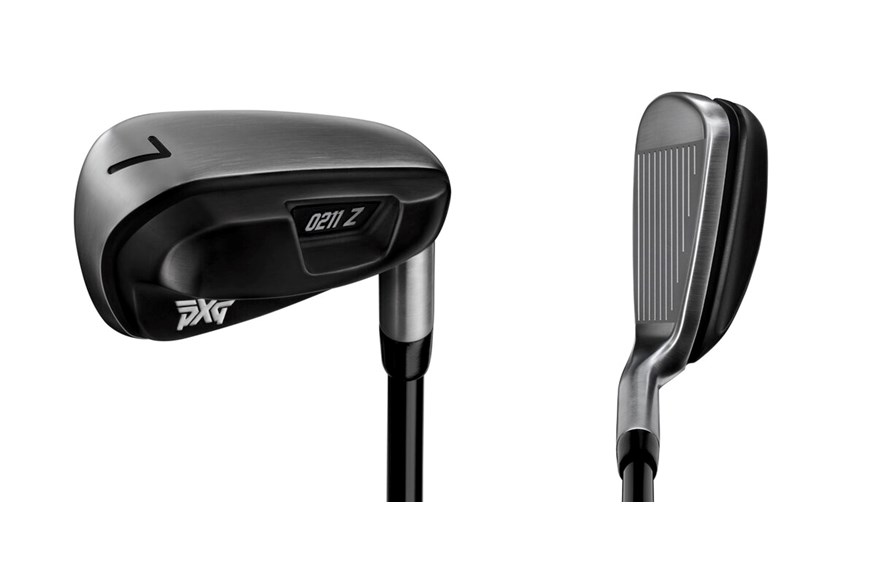

Millions of dollars are spent on package sets every year, and back when golf participation was booming thanks to the Co-Vid pandemic PXG spotted the opportunity to create their very own premium box set. The idea was a set that introduced golfers to the game where the irons and woods could also be bought separately. The 0211 Z irons have stayed in the range ever since.
If golf for you is about having fun and enjoying yourself, rather than making the game harder than it needs to be by playing a set of irons above your ability the hybrid style 0211 Z are a fantastic option.
Our test data shows that while the model didn’t have the weakest lofts in the PXG family they created more spin than any other iron in the line-up. To golfers, that means no matter what your speed this model is incredibly easy to flight for maximum distance and stopping power, and when shots don’t hit center face they’re the least punishing too.
TG Test Pro Data:
Ball Speed: 123.3 MPH / Launch Angle: 15.5º / Backspin: 6334 RPM / Peak Height: 31 YDS / Descent Angle: 45.6º / Carry Distance: 175 YDS / Shot Area: 318 SQ YDS
Pros
- Super forgiving hybrid design
- Competitively priced
- Less need for a fitting session
Cons
- Less attractive head shapes and profiles
| Category | Hybrid Iron |
| Handicap range | 28 and below |
| Construction | Cast hollow body |
| 7-Iron loft | 31º |
Data comparison: How the best PXG irons compare in numbers
| 7-Iron Loft | Ball Speed | Launch Angle | Backspin | Peak Height | Descent Angle | Carry Distance | Shot Area | |
| PXG 0317 ST | 33º | 118.9 MPH | 15.4º | 5619 RPM | 27 YDS | 42º | 174 YDS | 184.5 SQ YDS |
| PXG 0317 CB | 33º | 122.8 MPH | 16.6º | 5568 RPM | 32 YDS | 45.7º | 179 YDS | 142.1 SQ YDS |
| PXG 0317 T | 32º | 125 MPH | 15.6º | 5343 RPM | 32 YDS | 45.1º | 182 YDS | 118.2 SQ YDS |
| PXG 0311 P GEN6 | 30º | 122.2 MPH | 14.6º | 5520 RPM | 28 YDS | 42.6º | 178 YDS | 199 SQ YDS |
| PXG 0211 XCOR2 | 28º | 130.1 MPH | 13.6º | 5057 RPM | 29 YDS | 41.8º | 198 YDS | 193.6 SQ YDS |
| PXG 0311 XP GEN6 | 27º | 126.2 MPH | 13.7º | 4726 RPM | 27 YDS | 40.8º | 190 YDS | 470 SQ YDS |
| PXG 0211 Z | 31º | 123.3 MPH | 15.5º | 6334 RPM | 31 YDS | 45.6º | 175 YDS | 318 SQ YDS |
How we tested which PXG iron is best for you
We asked PXG to submit their entire 2024 irons range for testing.
We created a controlled test environment indoors at Keele Golf Centre and used premium Titleist Pro V1x golf balls.
We collected a ton of data from every iron shot hit, using a Foresight Sports GC Quad launch monitor, all of which can be found further down this piece.
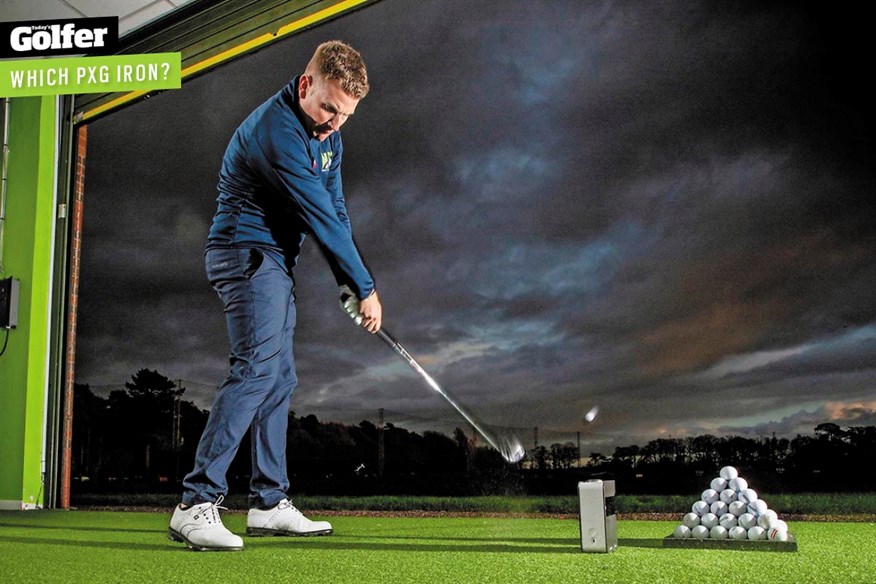
How we analysed our PXG irons data
Before we came to any conclusions, we analyzed the data for each club tested; on distance, spin rates, and forgiveness. The latter we refer to as drop-offs; the differences in ball speed, spin, and carry between our test pro’s on- and off-center hits.
This insight gives a reliable indication of how forgiving each model will be on the course, as we’ve argued for years that dispersion can be very misleading as it’s based on how you swing on a particular day.
Video: Which PXG iron suits you?
What our iron forgiveness ratings mean
Category 5: Hybrid Irons
Hybrid irons have been the much-maligned black sheep of irons for years, but they now represent a huge opportunity to keep golfers – who typically lose 0.5 mph of clubhead speed each year once they hit 60 – in the game for longer.
There has been a growing trend in this area in recent years. Not only are brands showing more interest in producing hybrid irons, but golfers are also more willing to use them. The extra playability that hybrids have brought to the long game has transformed many golfers’ games.
If your game or swing speed has gone south, or you’re just out to enjoy the game hybrid irons are a brilliant option.
Typical performance traits
In the hands of average club golfers, hybrid irons are more forgiving than any other model. They have big wide soles to launch shots high with increased forgiveness, while designers claim they also help prevent digging into the turf, thereby reducing fat shots.
It’s exactly the type of styling that led golfers to fall in love with long iron replacement hybrids/rescues. The center of gravity in hybrid irons is lower and deeper than a typical cavity-back iron.
Who should use hybrid irons?
Golf should be fun and hybrid irons can turn a frustrating round into an enjoyable one. The extra playability means more shots carry sand and water hazards. Hybrid irons aren’t just for players with slower swings. They’re for anybody who wants to reduce frustration and have more fun.
Category 4: High-Handicap and Moderate Speed Irons
This category is as forgiving as it gets if you insist that an iron needs to look like an iron and you’re resistant to exploring hybrid iron alternatives.
Historically, golfers have traded looks for forgiveness in this category, but modern models have come a long way in recent years. It’s now possible to get your hands on an iron like the Callaway AI Smoke HL, which is not only great looking but also super forgiving and powerful.
Better yet, it won’t highlight you as a hacker before you’ve even hit a shot!
Typical performance traits
Historically, high-handicap models have big chunky heads, thick toplines, and even wider soles. The best of the latest models challenge that thinking, though, thanks to dense tungsten weighting that places critical mass in very specific areas of the head.
Category 4 models have either a deep cavity-back or a hollow head and they’re very often the lightest in a brand’s iron range. Shafts are often lighter with softer tip sections to increase launch and spin, which helps maximize distance at lower speeds.
Some models unashamedly reduce weight to naturally add speed. This is great as long as your swing isn’t too weight-sensitive and you lose the ability to ‘time’ shots. It’s worth remembering that the larger the head size, the easier it is to get an iron face to flex and add speed.
Who should use high-handicap irons?
Golfers who aren’t afraid to admit that their game needs as much help as they can get their hands on is a reasonable rule of thumb. Whereas game-improver models are often designed for 20-handicap golfers and below, super game-improver models fill the gap above this really nicely.
However, make sure that you’re well aware of which models are lightweight and/or strong lofted, and make a decision on which best suits your game after trialing both. Get that right and the irons within this category can seriously raise your enjoyment of the game.
Forgiveness Category 3 + 3.5: Mid-Handicap/Game Improver Irons
This area of the market produces the most sales simply because there’s more mid-high handicappers. Brands invest huge sums developing new technology in this area.
Typical performance traits
Today this category tends to be where most brands position their strongest loft irons as above here there’s a real trend towards higher lofted High Launch models. Extra hosel offset will push the CG back to aid launch. It’s not uncommon for Mid-Handicap irons to have a 10mm+ longer blade length with sole widths some 45% wider than a Category 1 blade. Toplines are often twice the width of a blade, too.
Who should use game improver irons?
Fitted with slightly lighter shafts and, sometimes, a lighter swing weight, these irons help maximise swing speed. It’s no secret the engineers target 10+ handicappers with these clubs. Irons with a forgiveness rating of 3 are fractionally less forgiving, and often very slightly more attractive than those rated 3.5.
Forgiveness Category 2.5: Players’ Distance Irons
In 2015, PXG founder Bob Parsons tasked his top engineers with the unenviable challenge of creating an iron that looked like a blade but played like a cavity-back. What they came back with – the original 0311 – changed the iron market.
TaylorMade joined the hollow-body players’ distance iron market in 2017 with the P790. It became the brand’s biggest-selling forged iron ever. Titleist then launched the popular 718 AP3 and Ping joined the party in 2018 with their i500.
The rapid growth of this category can not only be attributed to aspirational aesthetics, but faster ball speeds and more distance than traditional players’ irons.
Typical performance traits
In many instances, the clubhead size in this category will be pretty compact, and don’t expect too much hosel offset, either. The toplines are reasonably thin and shaft weights tend to be a little lighter and higher launching than those found in blades.
The face might be forged – as found in the TaylorMade P790, Ping i500 and Cobra King Forged Tec – and hollow body technology is more typical than a cavity back. The average 7-iron loft in this category is 2° stronger than in the Category 1 models, which inevitably means extra ball speed and distance.
Fast-face tech is par for the course with clubs in this category, too, while internal tungsten weighting is also common. This gives the manufacturers’ engineers the ability to manipulate the center-of-gravity location in the clubhead to help shots launch higher from a stronger loft as well as deliver more forgiveness over Category 1 and Category 2 models. That’s some seriously good food for thought.
Who should use players’ distance irons?
Don’t be fooled into thinking Players Distance Irons are the wonder drug for all golfers… they’re not. What our test data does show, though, is what’s on the line when a golfer chooses either a Category 1 or Category 2 model when, in fact, they should be playing a Category 2.5 iron.
While the typical shaft weight and profile were perfect for our test pro, many mid-handicap and above golfers would benefit from the slightly lighter weight and added consistency of a Category 3, Category 4 or even a Category 5 model. Irons in this category bridge the gap from traditional game-improver to players’ models brilliantly, which means they usually work best for golfers with handicaps of 12 – 14 and below.
Forgiveness Category 2: Players’ Irons
If you need any evidence to support which type of golfer this category is aimed at, you only need to look at tour players like Jordan Spieth, Shane Lowry and Matt Fitzpatrick. All are major champions and currently play irons that fall within this category.
These types of irons are very good options for impressive ball-strikers who don’t necessarily want to compromise on looks, but still want some forgiveness built into what is essentially a blade shape clubhead.
Typical performance traits
Player irons generally are pretty similar to blades for hosel offset, topline thickness and sole width. The majority are forged (with the exception of Ping’s models) as the decent players who use them often believe forging delivers a premium feel/sound. Plus, it’s worth remembering that more than 90% of tour events are won by players using forged models.
For us, a Category 2 model must have some type of cavity-back, either shallow as with the Mizuno JPX923 Tour or deeper as found in the Ping Blueprint S. Where just a decade ago there would have been no thin fast-face or hollow body tech more golfers are today willing to accept models like the TaylorMade P770 and PXG 0317 T as being THE modern-day players’ iron.
Lofts generally are fairly traditional, since golfers at this level want very consistent gapping and predictable yardages, even on slight mishits.
Who should use players’ irons?
It goes without saying that you need to be a decent ball-striker to get the best out of Player irons. That means you’ll need to be very close to a category one golfer. That’s the reason why Players’ Distance irons (forgiveness Category 2.5) have become so popular over the last decade.
As they bridge the gap that was really difficult to cover when golf didn’t have fast-face tech, strong lofts or hollow body constructions. If you can tolerate some modern tech, you can not only get extra ball speed and distance but more forgiveness, too.
Forgiveness Category 1: Muscleback Irons
Musclebacks, also known as blades, are not only the most traditional irons, they’re also the most unforgiving, hence our forgiveness rating of 1. Any golfer thinking of buying a set of blades should have no real desire to add any extra speed, distance or forgiveness to their game.
In fact, the 10% of tour pros who use blades typically do so because the forgiveness levels are so low. It means they can shape shots at will while barely needing to alter their swing.
Typical performance traits
Blades are typically forged rather than cast. The forging process that stamps the irons into shape under high pressure compresses and aligns the grain of the metal more closely, which is said to improve feel and feedback. Musclebacks also have the least amount of hosel offset, which means the centre of gravity (CG) of the clubhead is further forward.
A forward CG delivers a lower, more penetrating ball flight, even though blades tend to have the highest lofts of any iron category. Head sizes are generally very compact, while soles and top lines are typically very slender, which means they should appeal only to the very best ball-strikers.
Most blades come as standard with heavy 120g+ shafts since the more accomplished golfers who use them typically create more swing speed.
Who should use muscleback irons?
There’s a strong school of thought among some hardcore golfers that blades are the only true way to play the game. Some also swear that blades are the best way to learn the game because you’re severely punished for mishits and therefore have to focus more intently on developing good swing technique.
Regardless, to get the best out of Category 1 irons you’ll need a handicap of low single figures or better. It’s our opinion that you shouldn’t really consider using them until you get close to scratch.
BECOME A TODAY’S GOLFER MEMBER: Unlimited access to premium content and exclusive rewards!
